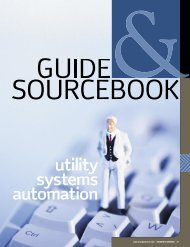FERC vs NERC: A grid control showdown over cyber security
FERC vs NERC: A grid control showdown over cyber security
FERC vs NERC: A grid control showdown over cyber security
You also want an ePaper? Increase the reach of your titles
YUMPU automatically turns print PDFs into web optimized ePapers that Google loves.
WWW.INTELLIGENTUTILITY.COM /// JULY/AUGUST 2011<br />
22<br />
“<br />
Challenges driven by legislation<br />
Driving the Borrego Springs project is California legislation<br />
that requires the state’s utilities to buy 20 percent of their<br />
power from renewable sources like solar and wind. That percentage<br />
increases to 30 percent by 2020. Integrating the new<br />
energy sources, as well as energy produced by homeowners<br />
with solar panels, can be a challenge for utilities, which is<br />
why the Borrego Spring project exists.<br />
Assuming that hurdles like<br />
Residents are energy storage can be ironed out,<br />
the micro<strong>grid</strong> project could have<br />
embracing the the potential to provide 15 MW<br />
of electricity, enough to power<br />
sun — specifi- the entire Borrego Springs community.<br />
At present, 75 homes<br />
cally, the vast have installed solar power in the<br />
community, with a cumulative<br />
potential from output of just under 800 kW.<br />
While the solar conversion<br />
solar power.<br />
growth rate for Borrego has not<br />
”<br />
been forecasted, the California<br />
Energy Commission’s growth<br />
forecast for the state calls for solar installs to grow 37.5 percent<br />
this year and next. There are currently about 200 MW<br />
of solar generation in the California <strong>grid</strong>.<br />
Coping with the challenges<br />
Like most utilities, SDG&E is trying to cope with the many<br />
challenges of smart meter deployment, like how to roll out<br />
smart meters and capture customer engagement, how to best<br />
plan for distributed resources like solar that can be intermittent<br />
at best, especially during San Diego’s foggy months, how<br />
to convert on a 10-year smart <strong>grid</strong> plan that includes items<br />
that are not even possible yet technology-wise, and how to<br />
best evaluate the slew of new technologies headed to the utility<br />
market. The purpose of the Borrego Springs micro<strong>grid</strong><br />
project is to examine all of those issues and much more.<br />
For example, during the spring, San Diego is hampered<br />
by two months of thick fog, which creates havoc with the<br />
utility’s ability to process power generated from rooftop<br />
solar systems.<br />
“If you know anything about San Diego, we have May Gray<br />
and June Gloom coastal fog which travels pretty far inland,”<br />
said Bialek. “It tends to burn off by noon, but you get little<br />
pockets where there are no clouds, and output of PV systems<br />
increases dramatically. Then the fog closes back in, creating<br />
significant power fluctuations which our voltage regulation<br />
equipment tries to keep up with during those short periods<br />
of time. So there are issues associated with penetration of PV<br />
and we’re trying to be pro-active about that.”<br />
While the integration of all the different IT components<br />
and communication systems represents one of the larg-<br />
DISTRIBUTED GENERATION<br />
est challenges in the project, “the real challenge is looking<br />
at some of the smart concepts around customer empowerment<br />
and trying to get customers to participate in the<br />
smart meter program,” said Bialek. “Based on their participation<br />
level, then you modify the output of generators to<br />
compensate for demand.”<br />
Multi-technology testing ground<br />
So far, smart meters have been deployed to all 2,800 customers<br />
in Borrego Springs. SDG&E is 98 percent complete in<br />
rolling out 1.4 million smart meters to its entire customer<br />
base. Studies show that smart meters can help homeowners<br />
to save between 5 and 15 percent on their utility bills<br />
by conserving energy.<br />
At present, two 1.8 MW diesel generators are being retrofitted<br />
and will be installed at the substation in August for factory<br />
testing. SDG&E has completed an RFP for energy storage<br />
components, with expectations that energy storage will<br />
be installed during the second quarter of 2012. Homes with<br />
existing solar and those that add solar during the course of<br />
the project will be equipped with home solar generators. The<br />
entire micro<strong>grid</strong> project is scheduled for completion during<br />
the first quarter of 2013.<br />
The Borrego Springs project will also serve as a test ground<br />
to define the future technologies needed to effectively run a<br />
smart <strong>grid</strong> and integrate renewable energy sources.<br />
Today, smart meter technology alerts a utility when a<br />
customer’s power is disrupted. Eventually, technologies<br />
will become sophisticated enough to send alerts when a<br />
system is about to fail, and remedy a potential<br />
problem before it occurs. During this<br />
self-healing process, <strong>grid</strong> switches will<br />
automatically re-route power to<br />
restore an outage without any<br />
human intervention.<br />
For now, that remains a challenge.<br />
For example, in the smart<br />
<strong>grid</strong> deployment plan filed<br />
recently by SDG&E, technologies<br />
do not exist yet to support<br />
many of the concepts included for<br />
2015 and beyond. Bialek says that<br />
commercially available energy storage<br />
options, equipped with the functionality<br />
to run certain types of protocols or scenarios,<br />
are still a couple of years away.<br />
“There are a lot of concepts there,” said Bialek, “but not<br />
a lot of hardware or software yet to provide a solution.<br />
That’s a major challenge for a utility like us. That’s why the<br />
Borrego Springs project is so important.”<br />
John R. Johnson is a Boston-based freelance writer c<strong>over</strong>ing<br />
wireless and RFID technology, as well as alternative energy topics.


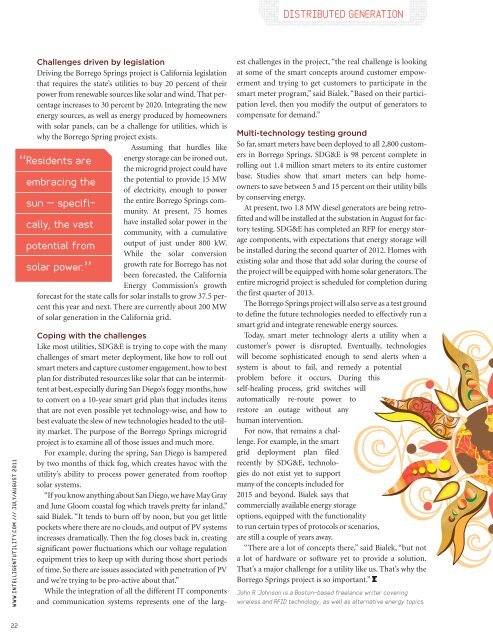
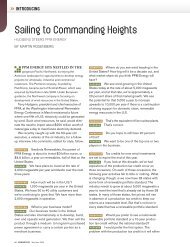
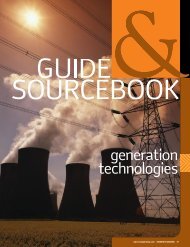
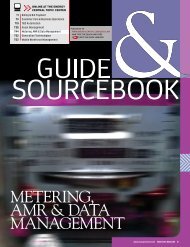




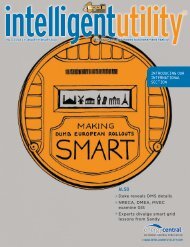
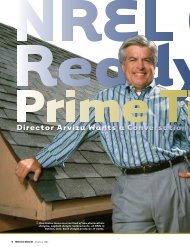



![View From the Trenches [PDF]](https://img.yumpu.com/18854438/1/190x252/view-from-the-trenches-pdf.jpg?quality=85)
